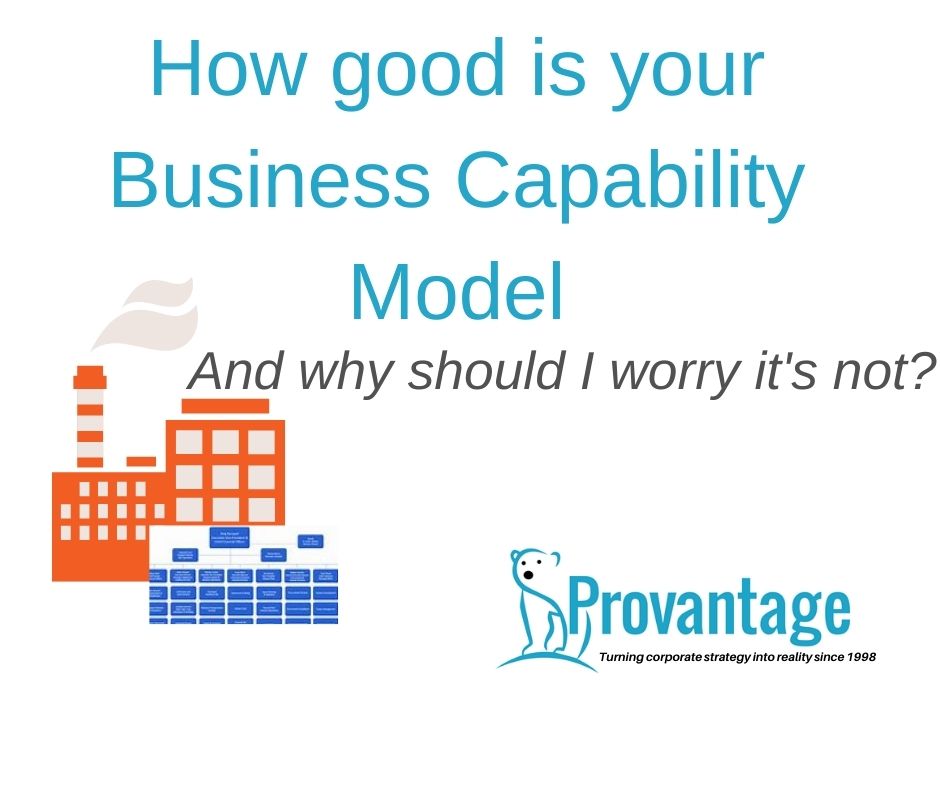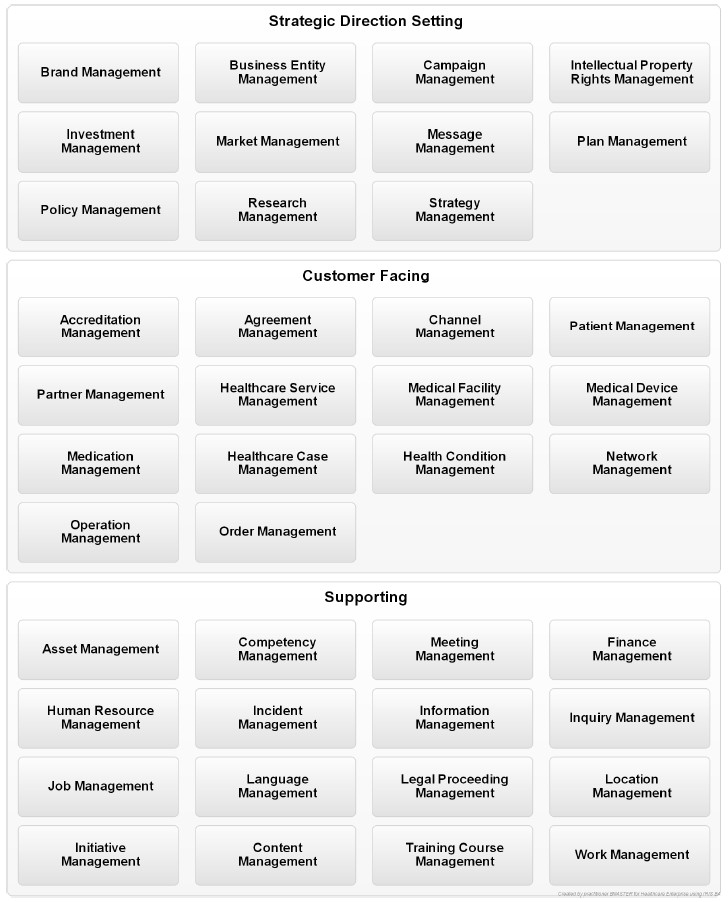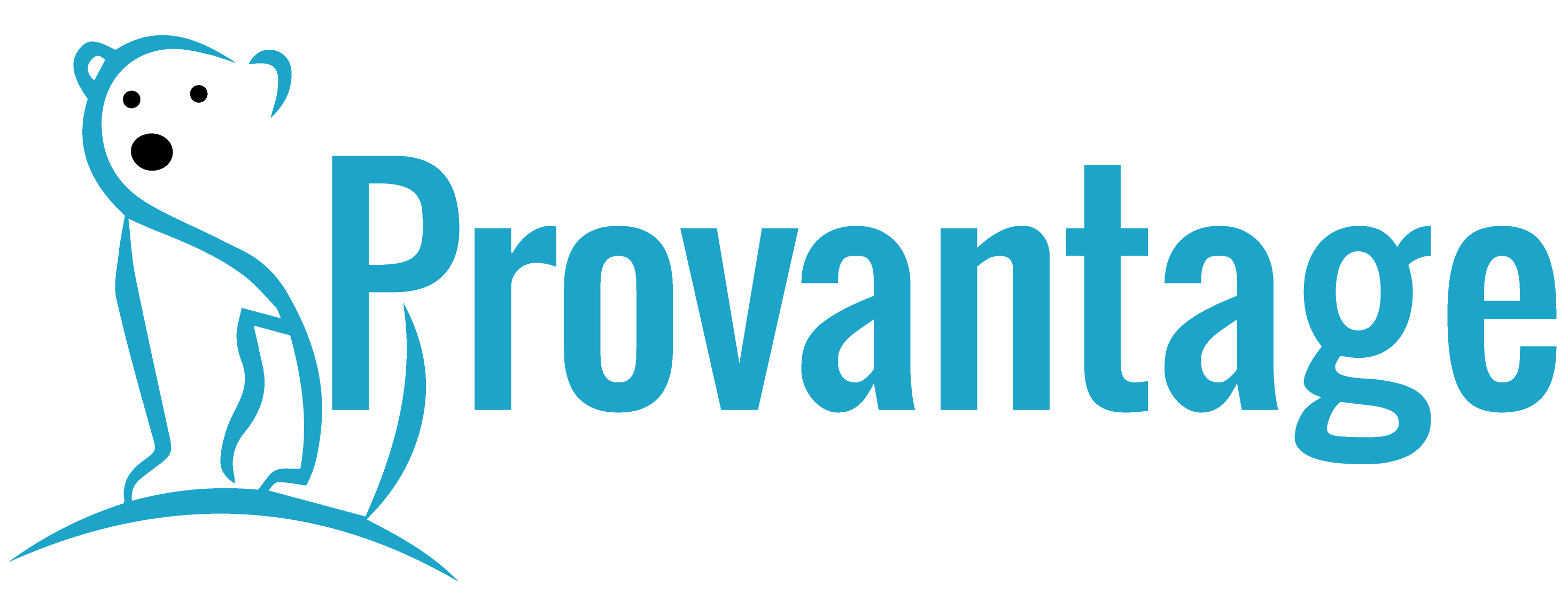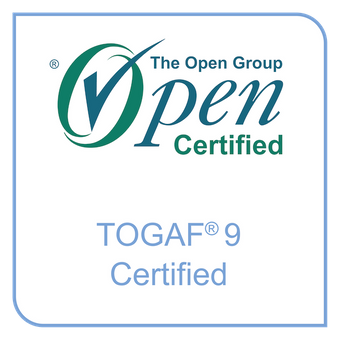
Posted: 7th March 2021
Author: Eden Yorke
What is the Business Capability Model
According to the definition of a Business Capability from TOGAF 9.2, it is: “A particular a business may possess or exchange to achieve a specific purpose“. Most businesses know what products or services they sell. Many will even be able to describe how they create them. But how many know every capability they have and how are they related?
This is where the Business Capability Model, or BCM for short, can address this gap. Before we begin, let’s get to grips with some basics.
What does the BCM represent
To begin with, the BCM is a catalogue of what the company does. As such, it is a representation of the business ‘at rest’. What does this mean? The organisation will consist of departments, teams, and sections. This enables the company to do what it does, it’s what the business is ‘in motion’, Much of this will change, day to day, week by week, New teams, with new business processes will come and go. But they will always provide one or two business capabilities, which is what the business is.
Because the business capability model is the business at rest, it represents the main features of the business. For example, if a company makes car parts, it will have capabilities that relate to making car parts. If the board decides it wants to make chocolate it will need to change the business capabilities to accommodate this new market. This is a complicated matter and should only be taken with great care. Changing the BCM could have adverse effects on the business and could call into doubt the thoughts and direction of the board.
However, it doesn’t mean it can’t be done. The pandemic has taught us that being willing to adapt is a good way of improving the chances of survival. A business might not need to alter it’s business completely to remain competitive. Small changes to existing or adding new ones could help. For instance, a high street shop selling reproduction furniture suddenly finds itself closed, To enable it to keep trading, it might consider setting up an on line store. Adding these capabilities, while technically complex, would be a simple matter.
But how do you build a usable Business Capability Model and how do you know when it is right?
Making a start
A typical Business Capability Model will have three primary areas:
- Strategic Setting
- Supporting
- Customer Facing
Each represents a grouping of capabilities, which will have different treatments.
Strategic Setting – In this category will be the capabilities concerned with setting the direction of the business. Many of the capabilities provided by the board and senior management are performed here.
Supporting – Within this category are the capabilities which represent areas providing support to the whole business. Capabilities such as development, technology support, and HR will go in here.
Customer Facing – This is where the differentials of the business reside. Its what the business cannot afford to be without.
Let’s see a typical Business Capability Model.

Healthcare Industry Business Capability Model (Reproduced from BIZBOK – (c) Business Architecture Guild)
This is just an example, fetched from the BIZBOK, created and managed by the Business Architecture Guild, and is one of many examples available from the Guild. Go over and see The BIZBOK® Guide – Business Architecture Guild for more information and inspiration for your own model.
How does this help?
Having constructed your Level One business capabilities, you can see clearly what your company does all in one place. These capabilities are a high level view of the business and where the board can see where investment can be made.
It is now possible to see what would be needed if you wanted to enter a new market. Some of the capabilities will remain the same in the Supporting and Strategic Direction Setting, while the most wok will happen in the Customer Facing or Core areas.
It’s not wise to have too many levels. One is okay two is better as you are able to break Business Capabilities to a more granular level. Three is probably getting too many, unless you have a massive, multi-national company and have many capabilities. Otherwise, two levels should be enough.
The bottom level
No matter how many levels, the lowest level is where you fit your Business Functions. While the Business Capabilities are classed as ‘your business at rest’, the Business Functions will be closer to your organisation chart, and therefore is ‘your business in motion’. Business Capabilities must stay fixed and changed at your peril. However, the Business Functions can come and go as needed. It is at this level it is possible to flow how the capabilities are achieved by composing Business Functions as and when they are needed. Business Functions are supported by applications and business processes, which can be changed as needed.
Changing the business
The BCM is an important artefact, and will form the basis for all discussions about changing the things the business does. Business Capabilities enable Value Streams, so having a sound mapping between the two will show the areas needing to change to enter the new market. Using the BCM in important strategic decisions supports the decisions with evidence and science, rather than long-winded exposition with no supporting data.
As time progresses, you will be able to relate enablers such as applications, products, business processes, and so on, back to the BCM to show how they effect each other.
In conclusion
A good BCM will tell the board and other executives what the business does to achieve its mission.
A bad or non-existent BCM leaves important business decisions to hearsay and knee-jerk reactions.
If this has made you think of resurrecting an old BCM initiative, or would like to know where to start, please don’t hesitate to get in contact today.


